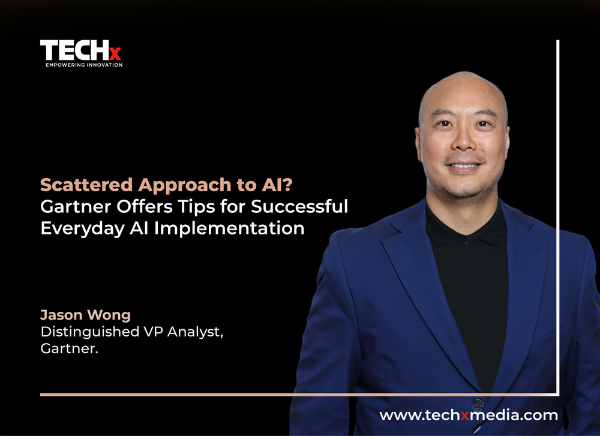
Digital workplace application leaders are tasked with leading the deployment and adoption of generative AI as part of their everyday AI efforts across the enterprise. “Everyday AI” refers to AI services that help workers improve productivity, deliver higher-quality work and save time.
When it comes to deploying GenAI, organizations often take a scattershot approach to selecting employees. This scattered approach to deploying generative AI can result in low adoption rates and misaligned expectations among employees and executives. Ultimately, this can lead to everyday AI showing minimal business value, potentially at a high cost.
To ensure an effective deployment of everyday AI on a large scale, leaders of digital workplace applications must consider the following actions:
To start implementing a new GenAI tool, leaders of digital workplace applications should first form a core governance team. This team should have members from various departments such as digital workplace, security, legal, HR, and corporate governance. It may also include representatives from an existing AI center of excellence (COE) or other governance body who are familiar with digital workplace applications and can effectively use the generative AI tools to test the new capabilities. Together, this team can evaluate multiple GenAI tools to determine the most suitable one.
The stress-test period should include dedicated time for members to experiment and test the limits of the AI tool(s) in your environment. The pilot team should provide feedback on specific criteria, such as ensuring proper controls are in place to prevent leaks of sensitive data and oversharing, clearly defining roles and responsibilities for addressing security, compliance, and data governance issues, and identifying any employee roles or use cases that may not be suitable for tool deployment.
While the governance pilot team is stress-testing, digital workplace application leaders must work with business leaders to gauge which employees would be best for the POV rollout phase. A POV should focus on finding employees with high digital dexterity — meaning they have high technical acumen and ambition to learn and apply technology.
There are four worker archetypes that can be selected for POV rollout, and they fall into the following categories:
Identify one or more cohorts of employees that have a mix of these archetypes and train them to collaborate in their functions, using GenAI to improve individual and team-based objectives.
Once the leaders of digital workplace applications are confident in their environment’s ability to handle everyday AI tools and have demonstrated their potential value, they can start planning for a broader implementation. Before moving on from the POV stage, it is important to assess employee adoption and the value of the tools by surveying employees and analyzing usage data within the applications.
Use the usage and feedback data to classify employees. This will aid in understanding the characteristics of those who have had more success with adoption compared to those who have had less success. This information can be utilized to develop and target training and support for each type of adopter, rather than using a one-size-fits-all approach.
Whether organizations choose to conduct a small- or large-scale rollout after the POV stage, they must ensure that mechanisms are in place to capture and measure business value. Increased employee productivity is often cited as the main reason for implementing everyday AI. Digital workplace leaders can utilize productivity zones to evaluate the impact of generative AI tools on individual and team outcomes. There are nine patterns of productivity zones that encompass a variety of tasks, relationships, and knowledge exchange activities.
If quantifiable ROI is required for larger-scale deployments, then digital workplace application leaders must evaluate costs and value in collaboration with finance and business partners. This cross-functional coordination is crucial, particularly if other domain-specific generative AI solutions are also involved, such as utilizing Slack AI alongside Salesforce’s Einstein Copilot for CRM. Together, they should determine financial success metrics for each business role and group or team and establish a method for tracking actual expenses and benefits.
Gartner analysts will be discussing more topics related to AI and digital workplace infrastructure at theGartner CIO & IT Executive Conference, taking place November 19-21 in Dubai, UAE.